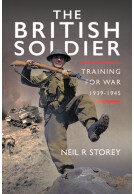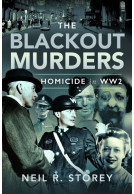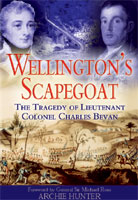Britain's Coast at War (Hardback)
Invasion Threat, Coastal Forces, Bombardment and Training for D-Day
Imprint: Pen & Sword Military
Pages: 272
Illustrations: 200 black and white illustrations
ISBN: 9781399001229
Published: 1st September 2021
(click here for international delivery rates)
Order within the next 2 hours, 39 minutes to get your order processed the next working day!
Need a currency converter? Check XE.com for live rates
The whole of Britain’s coastline was involved in the struggle against the Nazis. In the early days invasion was the main threat.Dover and the South East suffered grievously from aerial attacks and were also shelled by German artillery from across the Channel, the area was dubbed ‘Hell Fire Corner.’ Cities and towns all around the coast such as Plymouth, Portsmouth, Hull and Great Yarmouth were the targets of devastating air raids. The coast and lochs of Scotland became a key training area for commandos and assault troops for D-Day and its ports saw the return of crews of sunk vessels of both sides.
The East Coast was pivotal to North Sea operations against enemy mining and E-boat operations. The Western ports, particularly Liverpool, were crucial to the vital Atlantic convoys and the defeat of the U-boat threat.
The final months of training and preparation for D-Day centred on the South Coast when disaster struck during Exercise Tiger off Slapton Sands.
Britain’s coastal ports continued to attract ‘Tip and Run’ raids and the attention of V rockets that changed the character of many these towns and cities forever. Neil Storey’s superbly researched work brilliantly describes all this and more in words and images.
This book will interest many, first and foremost, because it fundamentally tells the home story of war. It reminds us that the Second World War had an impact on each local community throughout the British Isles in terms of the coastal defence that was built up at this time. If also you enjoy finding searching for the archaeology of World War Two that remains in our country, again this book will be of great interest. It reminds us that the front line reached our home shores, as well as those on foreign shores. The extent of the geographical coverage contained the book is borne out by the various geographical locations included inside its pages, from Dover, Eastbourne, to Shorecliffe,, Skegness, to Scapa Flow and Shetland. This is of course a testament to how war impacted on so many different parts of our islands. Key elements included by the author are the last summer before war, the Phoney War, the front line coast, to coastal defence, defending bleachers, to cross channel bombardments and air raids.
Jon Sandison
As featured in Literary Life
Sussex Life
As featured in
Sussex Life
The book is filled with personal accounts of the various people and places involved. It was a fascinating book that filled in some hitherto unknown bits of history.
NetGalley, Susan Johnston
The changing face of the threats faced by the British coastline changed over the course of the war and the book does a great job of painting the complex picture for us.
Military Model Scene
The common image of Dad's Army, the Home Guard protecting the coastline was indeed one element, but this tells us the much wider story and does it very well in my opinion. Great photo references and a really interesting story to read.
Read the full review here
My interest in this book comes from growing up and living on the South coast. I am familiar with many of the sites and locations mentioned in this book so looked to forward to reviewing it. I am glad to say that I was not disappointed.
Western Front Association - Hampshire & Isle of Wight Branch
The author’s style of writing is easy to follow and the structure flows naturally from chapter to chapter. The detail of both the overall military requirements is explained in a manner that the lay person can understand which is a great bonus meaning this book will appeal with those in a casual interest in the areas (being south coast biased as would be expected) covered. But those with a deeper interest in military history will also gain much from reading this book. I now have a much deeper understanding of how the defences were constructed and why, which has led me to visit various locations that I both know and are new to me.
Recommended especially if you live on the south coast.
I cannot recall having seen a book that covered this many facets of the British coastline in the run up to and during World War II. The fact that the book has not just concentrated on war makes for an interesting read, due to it looking at the coastline during peace and its transition to a well defended military installation which due to being an island was no mean feat.
Armorama
Read the full review here
An interesting book of an almost imaginary time when everyone rallied together in one way or another to defend this island that we call home. The whole of Britain’s coastline was involved in the struggle against the Nazis. In the early days invasion was the main threat. Dover and the South East suffered grievously from aerial attacks and were also shelled by German artillery from across the Channel, the area was dubbed ‘Hell Fire Corner.’ Cities and towns all around the coast such as Plymouth, Portsmouth, Hull and Great Yarmouth were the targets of devasting air raids. The coast and lochs of Scotland became a key training area for commandos and assault troops for D-Day and its ports saw the return of crews of sunk vessels of both sides. Chapters 1 catches the last summer that the Britons had before the Phoney War in chapter 2 when there was a hope that it would be all over by Christmas. Chapter 3 looks in detail at the Front Line Coast and the preparations for war by the LDV later the Home Guard. Then came Dunkirk and then chapter 4 Britain Alone.
Loopholes Number 82
Chapter 5 The Coast carries On; the East Coast was pivotal to North Sea operations against enemy mining and E-boat operations. The Western ports, particularly Liverpool, were crucial to the vital Atlantic Convoys and the defeat of the U-boat threat. Chapter 6 we will fight them on the beaches, and chapter 7 Strangers on the Shore. The final months of training and preparation for D-Day centered on the South Coast when disaster struck during Exercise Tiger off Slapton Sands. Chapter 8 looks at the Cross Channel Bombardments with the use of what we now call super guns, chapter 9 Air Raids the destruction and attempts to stop aircraft in their tracks. Britain’s coastal ports continued to attract ‘Tip and Run’ raids and the attention of V rockets that changed the character of many of these towns and cities forever. Chapter 10 measures the cost of those at sea in; The Cruel Sea followed by the last chapter The Turning of the Tide getting ready for the off… D-Day.
Neil Storey’s superbly well researched work brilliantly describes all this and more in words and images. It has notes and a good bibliography. He is an award-winning historian and author. A graduate of the University of East Anglia, he lectures widely on 20th Century history and has assembled a fine collection of original First and Second World War images. He has published works by Pen and Sword Books Ltd.
Neil Storey is an author local to me who always turns in a brilliant account of whatever he's writing about. Having already covered the Norfolk and Suffolk coasts for Pen and Sword he now extends his range to cover the entire British coastline. Superb.
Books Monthly
It is lavishly illustrated with black and white images and it is good to see some unfamiliar pictures.
ARRSE (Army Rumour Service)
Read the full review here
5 stars: Coasts are what we do
Amazon Customer
Read the full review here
"For those who wish to learn more about this aspect of the Home Front I cannot recommend better read!"
Martin Willoughby, Chairman of the Wessex Branch of the Western Front Association
This book is like one of those ‘behind the scenes’ type books or films, in that we all know the major part of war is the battles and fighting but this is the ‘backstage’ crew in that this book is all about the homeland coastal defences, the local defence volunteer forces. The women getting in the fish and helping support the fishing industry to provide food for men and a nation and it’s about training the men to be able to do what we need the soldiers to do. I loved this book because it was about the background work and there was a whole lot of local history giving you the stories and tales of those trying to live life on the homefront and doing the work back home that a nation needed doing. Now I’m going to say the book is very well written indeed and a great job has been done. But I’m going to say the photographs in this book are equally important to the story, there are over 200 altogether and really sum up a country’s war spirit. I’m even going to say this book is so good, this book is definitely in my top 5 books of this year for sure, I want to re-read it and use it as a reference guide. If you want to read a great book this year that is more than just about war, this is it.
UK Historian
Read the full review here
I enjoyed the 8.5+ hours I spent reading this 272-page WWII history. The book includes several first-hand accounts. It is a very readable history though it contains many details. The book is an interesting and different look at Britain at war. I like the selected cover art. I rate this book as a 4 out of 5.
NetGalley, John Purvis
An interesting look at the coastal war in Britain during WW2. Good first hand accounts and stories makes this a good historical read.
NetGalley, Ron Baumer
History buffs will know that there is so much more to understanding the events of WWII than what we see in popular films and documentaries. The impact was so far reaching, both in terms of geography and human experience and it is hard to imagine an impact area which has not been explored. England was devastated by the war and the impact was felt beyond the battlefields of Europe. This book shines a spotlight on the impact on the coastal regions of England and the people who lived, and died there. The author does a good job in presenting this perspective in such a way as to make it both an interesting one off read for any reader as well as a detailed exploration for the WWII history buff. Great job.
NetGalley, Louise Gray
About Neil R Storey
NEIL R STOREY is an award-winning historian and author who specialises in the impact of war on British society in the first half of the 20th Century. A graduate of the University of East Anglia, he lectures across the UK and has assembled a fine collection of original First and Second World War images to illustrate his works. Neil has published over forty books, has written for national magazines and journals and appears on television documentaries and factual programmes as a guest historian including Who Do You Think You Are? and The Buildings That Fought Hitler.
Neil's other books published by Pen and Sword Books Ltd include: The King’s Men: The Sandringham Company and Norfolk Regiment Territorial Battalions 1914 – 1918, Beating the Nazi Invader and Britain’s Coast at War.





















